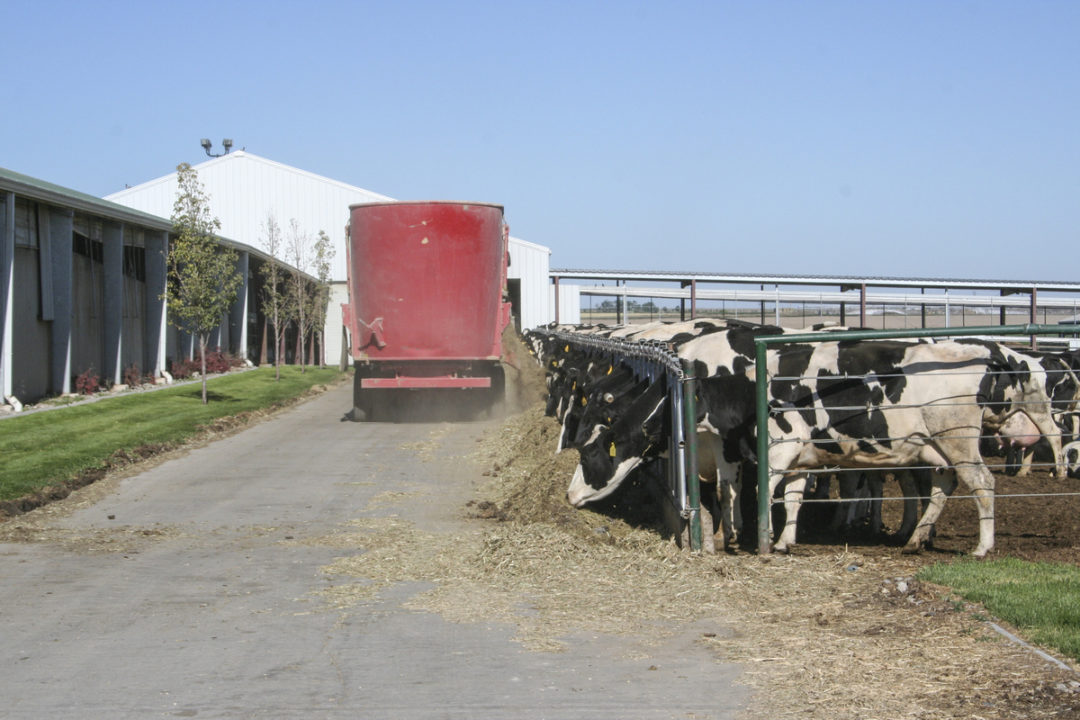By now, most producers and nutritionists have at least heard of the use of the various essential oil products that are becoming more common in the dairy feeding industry. Because of research and practice, some promise has been shown for use of these various products, but unfortunately, there is still quite a bit of confusion.
Start with the names used in describing the overall group of additives. The name essential oil is only one of several descriptors used for a class of oil-based materials produced from various species of plants, extracted from roots, stems, bark, leaves, needles, rinds or seeds. When fed at very low levels, these compounds can produce a variety of results. Part of this confusion comes from the fact that similar products to these are also sold in the retail home market and are used for air treatments (aroma therapy), something you put in your bubble bath, etc. It’s understandable why you might scratch your head as to how this product might improve feed efficiency or reduce stress in an animal.
Other names for this class of products include plant extracts or phytobiotics, both of which are reasonably accurate descriptors. So, when you hear any of these names, they are referring to, more or less, the same thing.
Another complicating factor is that the American Association of Feed Control Officials (AAFCO), a regulating body for the feed industry, does not allow us to include these materials on a feed tag under these names since they are not recognized as such yet. In most cases, these ingredients are most commonly listed as a flavor. On a tag, you will commonly see these fall under the listing of “natural or artificial flavors,” in the same manner that a true flavoring agent would be listed. Many essential oils do, in fact, retain the aroma or flavor of the source plant material they are taken from, so this is not an inaccurate description either.
How essential oils are produced
Going back in history, it is well known that a variety of plants have medicinal properties. Before we had antibiotics, pain relievers and other useful drugs and compounds, a great deal of medicine was based on the use of various plants to help aid in the healing process from sickness, injury, digestive upsets, headaches and so on. Our forefathers knew a great deal about which plants held which properties, and by the time more-modern medicine replaced these compounds as the treatment of choice, man had developed quite an extensive knowledge of the multitude of effective plant chemicals available. One particular property a number of essential oils possess is as an antimicrobial or having effects on a microbial population on a surface or in a liquid media. This gave rise to use in the rumen of the cow.
The constituents of an essential oil are created by specialized plant cells, which secrete them into very tiny sacs or glands, either on the surface of a leaf or flower, or deeper inside the plant tissue. Most essential oils are extracted using one of two methods: mechanical expression, which is generally used mainly for citrus fruits, and distillation, which causes the glands in the plant containing the essential oils to release their contents.
-
Mechanical expression: This method is commonly used for extracting essential oils from citrus fruits. Whole fruits are tossed around in a large drum device while being scarified or rasped by thousands of micro-spikes. These pierce the essential oil glands dotting the surface of the fruit, and this extracts the oil in a cold process. Water is used to flush the essential oils away from the fruit, and a centrifugal separator then separates the essential oil from the water and fruit juice. The process is highly mechanized. Expression is generally preferred, as it produces an essential oil with a superior odor compared to distillation.
- Distillation: This method makes use of water and heat to achieve separation of the essential oil from the plant material. Also known as hydro-distillation (a method that has been in use for about 1,000 years), plant matter is boiled in water, and the water vapor plus volatile essential oil components are captured and condensed back into liquid form through cooling. Since essential oils float on water, separation is straightforward. A more-modern form of distillation, steam distillation, uses either "dry" or "wet" pressurized steam to cause evaporation of the volatile components. During this process, plant matter is placed in a closed chamber and steam is passed through it, which again causes the volatile compounds in the plant to evaporate. In the final step, as in hydro-distillation, the water and oil are condensed and then separated, leaving just the pure essential oil.
For products used in the animal feed industry, in many cases the essential oils are blended onto a dry carrier, which simplifies handling and mixing. Some products remain in highly concentrated liquid forms and can be incorporated into feed and nutritional products.
Practical applications
Over recent years, the use of essential oils in the dairy industry has become more common. Since there are literally hundreds of essential oil products on the market, both individual and in combination, selecting a particular product can be a challenge. Additionally, given the large number of essential oils to choose from, there are a large variety of potential effects these products can have on the animal when fed through the total mixed ration (TMR). Here are some examples:
- Cloves and cinnamon have an antimicrobial effect in the rumen, as well as being potent antioxidants.
- Thyme stimulates the digestive system and may promote animal growth and productivity.
- Vanilla and anise may improve feed intake and efficiency.
- Oregano has documented antibacterial and antimicrobial properties.
- Garlic, lavender, anise and citronella may have an insect (fly, mosquitos) repellant effect.
- Citrus, lavender and rosemary have been shown to modulate the stress message in the brains of animals.
- Turmeric, black and red pepper, and ginger have been shown to promote saliva production and pH (improved rumen buffering in ruminants).
There are numerous companies producing a wide variety of essential oil blends targeting a number of effects positive to production. A few individual (single-component) products are available, but the majority are blends of two or more essential oils (you will also see some reference to spices) in an effort to accentuate the effect to the animal.
For example, there is a trend in the current animal feed market to identify essential oil products that can effectively replace monensin. A commonly used feed additive and antibiotic, monensin is included in both dairy and beef feeding programs to improve feed efficiency. But because it is an antibiotic, there is pressure from the consuming public to reduce or eliminate its use. Recently, several trials have been conducted comparing the use of monensin and different essential oil blend products in both beef and dairy feeding programs. Interestingly, several of these studies have shown that the essential oil product has very similar responses in the animal to monensin, having almost identical effects on feed efficiency, animal performance and economics.
Other products have been used to mitigate stress effects in receiving/transition cattle, as well as high-producing dairy cows or cattle subjected to heat stress. Some of these effects in the animal are related to changes in brain chemistry, which subsequently accentuates the stress. This can depress feed intake, immune response and other metabolic processes. Some essential oil products have shown promise in offsetting changes in brain chemistry during these periods and may help minimize the overall stress in the animal.
Conclusions
Essential oils appear to have a very promising role in dairy and animal nutrition and feeding in general. We still have a way to go in understanding these materials overall and certainly in recognizing which individual essential oils and combinations or blends can be the most effective. This will take more research and application. For the dairy producer, work with your nutritionist to review the products on the market and determine which may have the most promise in your particular operation and are the most cost effective. Evaluate the effect of a particular product on your farm, and remember that there are many choices on the market.







